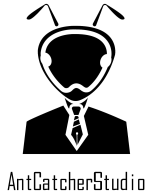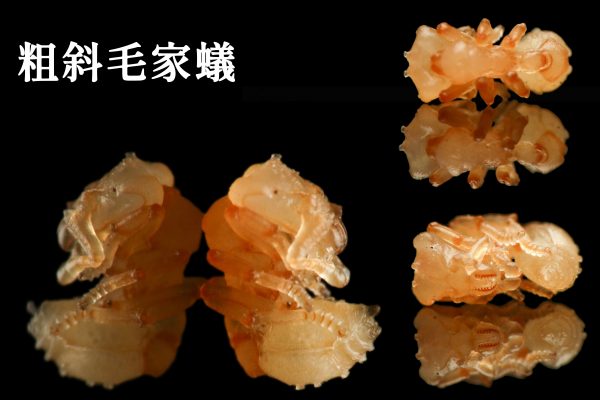簡介
研究人員首次發現,螞蟻的蛹會產生一種分泌物,讓工蟻及幼蟲食用,進而引起工蟻的照顧行為。
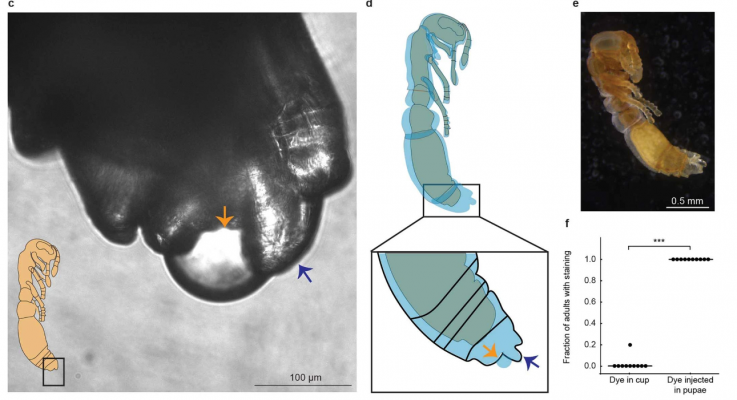
工蟻的照護行為
我們以往都認為,工蟻會無條件地照顧卵幼、為整個群體付出,不過這種觀點可能要改變了。
工蟻細窄的腸道無法吞進固體食物,因此都是由幼蟲負責消化、分解固體食物成營養液,再由工蟻取食,某種程度上來說,工蟻照顧幼蟲的行為,是利用幼蟲幫忙消化食物。
我們原先認為蛹是螞蟻社會中,唯一無功能無產值的階段,但在最新的研究中,研究人員發現蛹也有重要的社會性功能。
新的發現
蛹會排出一種分泌物,其富含營養、激素和神經活性物質,這種分泌物如果不清理,蛹會發生真菌感染病死亡,但幸好,這種分泌物對工蟻來說非常有吸引力,他們會迅速的清潔並吃掉這些分泌物。
蛹分泌的這種物質,稱為蛻皮液
( 這也是為何我們一直沒察覺到有蛻皮液的原因,因為都被馬上吃掉啦 )
工蟻樂於享用這些蛻皮液 ( 並把蛹全部舔個遍 ),這種行為恰好成為了,工蟻清理、照顧、扶養蛹的結果。
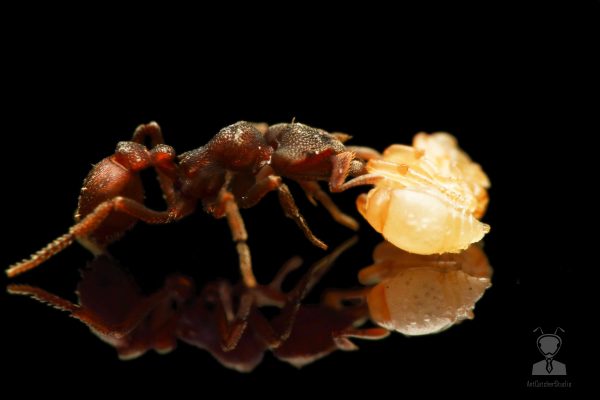
工蟻照顧幼蟲,是因為幼蟲可以幫忙消化食物;
工蟻照顧蛹,是因為蛹會分泌好ㄘ的東東;
這樣看來,或許工蟻並沒有大眾所想像的那樣,完全的無私與奉獻。
還有個新功能
蛻皮液除了會吸引工蟻取食,還是早期幼蟲的重要營養來源!
研究發現,工蟻會將分泌物餵食給低齡幼蟲,並且,如果幼蟲沒有攝取這種營養分泌物,則會有生長發育遲緩和存活率下降的現象,也就是幼蟲不只依賴工蟻的照護,也需要蛹的分泌物刺激成長。
並且,這種現象,在多數螞蟻中都存在。

( 在畢氏粗角蟻中,更常見的情況是,低齡幼蟲被放置在蛹上,任由幼蟲自行取食蛻皮液,高齡幼蟲則被放置在獵物上 )

結繭的螞蟻
那麼,會結繭的蟻種呢 ?
研究發現,繭皮包覆全身的蛹,也會分泌蛻皮液,浸濕繭皮底部 ( 黑黑那邊 ),供成蟲食用。
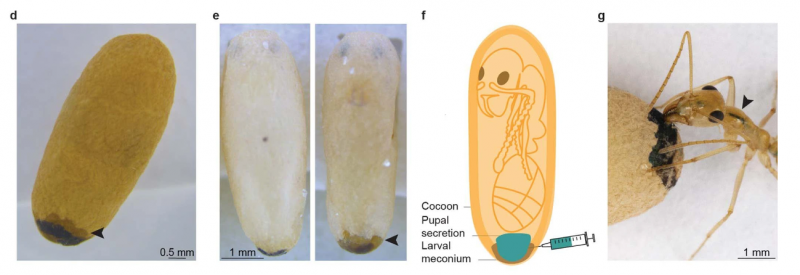
結論
迄今為止,我們都沒有發現過這種分泌物的存在,現在證實,這是一種被忽視的,螞蟻互動行為的核心基礎,並且表明蛹 / 蛻皮液分泌物在螞蟻社會性進化中起著重要作用,以及在各種螞蟻中普遍存在。
這樣的新發現,可以為未來針對螞蟻社會互動、成長發育以及特殊機制的研究上提供新的觀點與思路。
原始文章
The pupal moulting fluid has evolved social functions in ants ( Orli Snir,2022)
